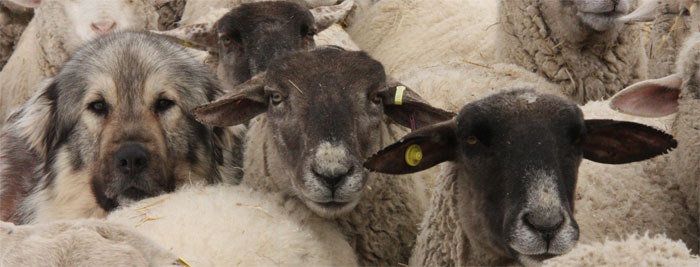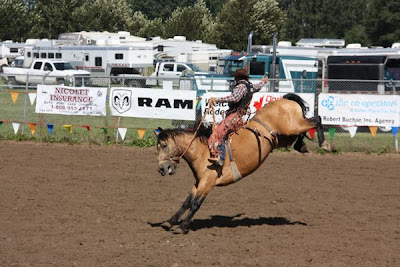By special guest, Sadie Parr
Alberta wolf bounty programs have been receiving attention recently. The municipal district (MD) of Big Lakes is one example of numerous programs across the province, providing $300 for each wolf turned in since 2010.
In three years, Big Lakes has spent approximately $87,000 on wolves claimed through the bounty program. People from the area as well as across the country are justifiably concerned that this is not an ecologically sustainable practice, nor ethically sound. Many wolves killed had never killed livestock, many of them never would have.
The real shame is that the situation is being portrayed as having two sides; those who want to protect livestock and those who want to protect wolves. The irony is that both of these objectives could be met simultaneously through working together. A large amount of money has been invested within Big Lakes to kill wolves. If preventing livestock losses is the goal, that money could have been better used.
Wolf Biologist Marco Musiani has spent more than a decade investigating the correlations between wolf depredations and raising livestock. His research has indicated that culling wolves has not been shown to reduce depredation, immediately nor long-term. Indeed, there is no evidence to show that indiscriminately killing wolves works as a long-term solution; depredations occur in areas that have been practicing lethal control for decades.
Musiani has described this approach as
“a short-term response to depredation that does not decrease wolf-depredation at a regional scale nor over long-term”.
In fact, in certain parts of North America, killing wolves indiscriminately through trapping may have lead to increased depredation rates on livestock the next year. This may be due to more wolves present in these areas following a disruption of their social structure or maybe wolves avoiding traps had learned to prey on livestock, and become more dependent upon domesticated animals as a food source as pack mates are removed. Similar research on Dingo’s in Australia also documented pack disintegration (loss of social stability regardless of population size) following indiscriminate lethal control methods. In this research there appeared to be an increase in attack rates on livestock when using poison baits.
 Photo: Wolf in a leghold trap from Alaska Magazine, Tim Woody
Photo: Wolf in a leghold trap from Alaska Magazine, Tim Woody
Council members of Big Lakes MD have stated that preventative measures would be extremely expensive. The following cost comparisons have been made using information gathered by John A Shivik of the US Department of Agriculture in his journal article in BioScience, March 2006 (“Tools for the Edge: What’s New for Conserving Carnivores?”), and through personal communication with wolf biologists, ranchers, and individuals providing electric fence workshops.
LIST of Cost Comparisons at $87,000 and duration of effectiveness:
Fladry: Cost estimate $781/km. Could purchase 111.4 km. Duration 60 days
Electric Fencing:
Cost estimate -$250 for Super Energizer IV voltmeter- 50 mile range (if off grid $450)
- grounding plates $17 or rods (rebar)
-rebar posts every 10-12 feet ($600 to $700 per ton)
-stucco wire roll 100 feet $80, or ¼ mile tensile steel $25
Could purchase -348 voltmeters or 5118 grounding plates or 134 tons of rebar posts or 108,750 feet of stucco wire or 870 miles of tensile steel.
Duration of effectiveness would be unlimited as long as fence was properly constructed and maintained.
Turbofladry: Cost estimate $1328/km. Could purchase 65.5 km. Duration unlimited as long as fence was properly constructed and maintained.
Livestock Guardian Dogs: Cost estimate $300 - $1000 initial cost, then $500 per year. Could purchase 108 guardian dogs (at $800 each). Duration of effectiveness is approximately the lifespan of guard animal, typically years.
Carcass Removal Programs: Cost estimate 9¢/lb for ruminants where programs occur, with a minimum $75 charge. If the average calf weighs 525 pounds at weaning 1160 calves could have been removed (at $75). If the average cow weighs 1800 lbs, then 537 cows could have been removed. In some parts of North America Fish and Wildlife will donate the truck and fuel costs. Often funds are generated through rancher donations, conservation group donations, local taxes, and grants. Duration of effectiveness is ongoing.
Range Riders: Cost estimate $110/day for 2 months/year is $6,600. In some parts of the US tourists are paying for the opportunity to do this. Could provide range riders for 13 ranches. Duration of effectiveness is ongoing.
Fladry is a simple, inexpensive yet effective method for deterring wolves from entering a pasture. It is a line of flags hung outside a pasture to dissuade wolves from crossing it and entering the area.
TurboFladry is Fladry combined with electric fencing, and although more expensive, this type of set up has proven very effective at keeping wolves out of a given area. Initial costs may appear high, but the effectiveness and longevity for preventing depredations should also come into consideration. As well conservation goals should also be included in the equation.

Husbandry practices where predators share the landscape with domestic stock can have a major influence on whether or not wolves will be attracted to an area. Many
predator-friendly ranching practices are inexpensive but an initial investment into providing this type of information and making it accessible to livestock producers is necessary. Some of the more commonly used and discussed techniques include: confining or concentrating flocks during periods of vulnerability, establishing a human presence using herders, synchronizing birthing to reduce the period of maximum vulnerability, and pasturing young animals in areas with little cover and in close proximity to humans. One of the most basic provisions for not attracting predators to areas where livestock is being raised is to remove dead livestock immediately from pastures. Carcass removal programs occur in parts of Alberta where Grizzly bears are overlapping with ranchers. Monitoring the health domestic animals regularly is critical to ensure dead and weaker domestics are managed, as these present more of an opportunity to wolves and other predators. If a producer can remain “unattractive to wolves” by promptly managing for dead and sick livestock, as well as maintaining a strong human presence, livestock depredation rates should decrease in most areas.
Currently, there is no known place in North America where livestock is the majority of wolf prey. This is not always the case in other countries where wolf populations have been all but decimated, such as Europe and Asia. It becomes necessary to identify that wolves account for approximately 1 – 3 % of livestock losses on a large scale in North America, with weather, calving, and digestive problems a far larger concern for producers.
Wolf researcher and biologist Marco Musiani has identified that seasonal patterns can be seen in livestock calving, grazing practices, and variation in wolf pack energy requirements. Understanding these patterns can help improve planning and management, and potentially alleviate conflicts.
It is also paramount to consider the benefits and costs involved in ecosystem services that are provided for by wolves as a top predator and keystone species. Wolves help to maintain the health, balance and biodiversity of natural ecosystems. The Big Lakes Regional District has been advertising lake estates as a “natural way of living”, which is indeed something to boast about. Especially as wilderness areas and natural predator-prey ecosystems are becoming more rare, and thus precious on a global scale, around the world.
Residents of Big Lakes have indicated that the elk population in the area may be increasing, and wreaking havoc on canola fields. This is just one other agricultural concern that may arise when tinkering with the natural system begins.
Local sustainability also embraces a land ethic. Aldo Leopold described this basic principal in the following way, “A thing is right when it tends to preserve the integrity, stability, and beauty of the biotic community. It is wrong when it tends otherwise.” Local sustainability is not just about taking care of the people in our community; it also requires stewardship of the plants, animals, land and water around us.
The MD of Big Lakes will be reconsidering the continuation of the bounty program this September.
For more information:
Sadie Parr
250-344-7998
sadester@hotmail.com (This email address is being protected from spambots. You need JavaScript enabled to view it)
To speak out for the wolves, please contact the municipal district of Big Lakes.
 Photo: Guardian dog with sheep by Louise Liebenberg.
Photo: Guardian dog with sheep by Louise Liebenberg.


























 Photo: Guardian dog with sheep by
Photo: Guardian dog with sheep by 












